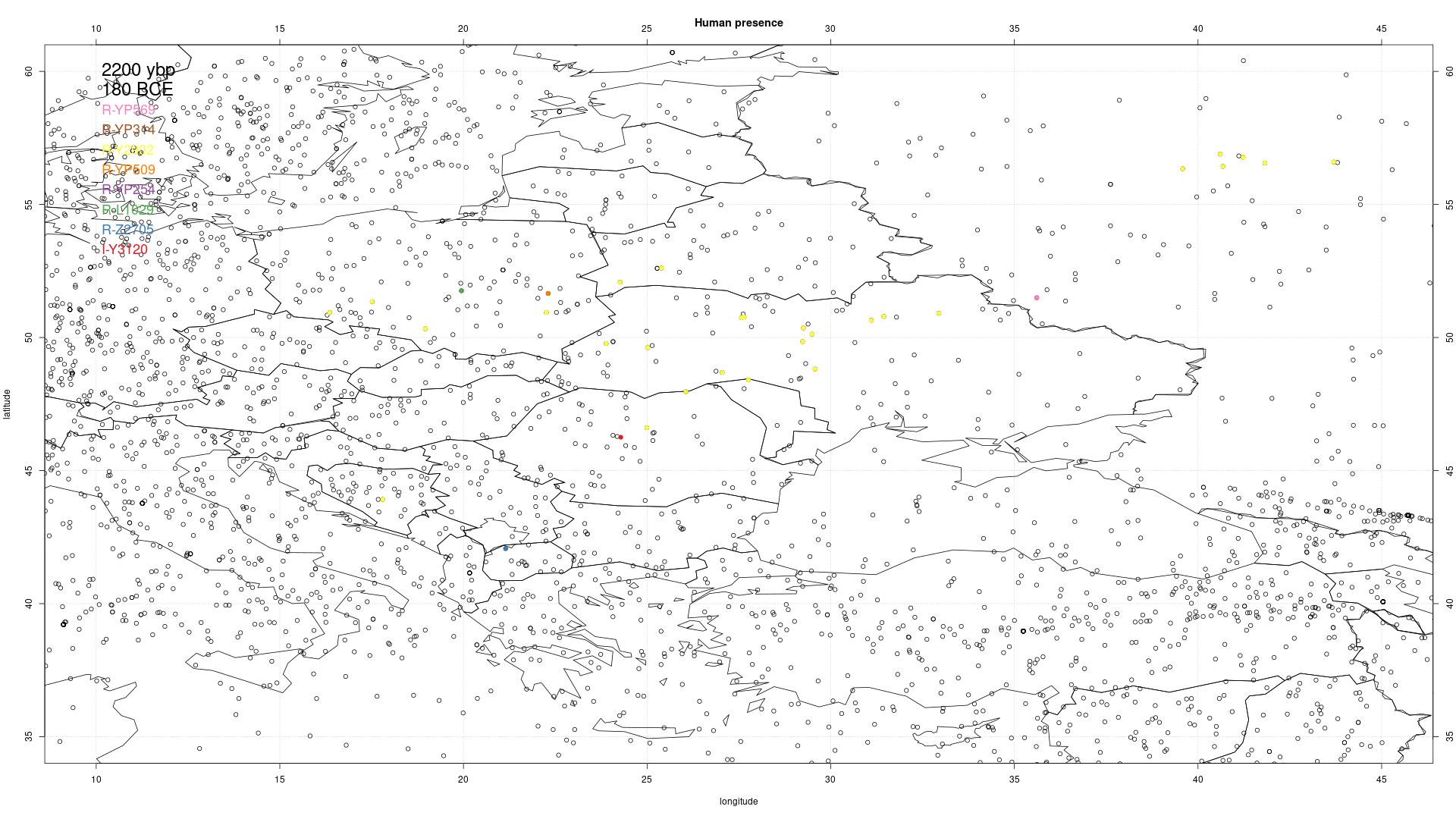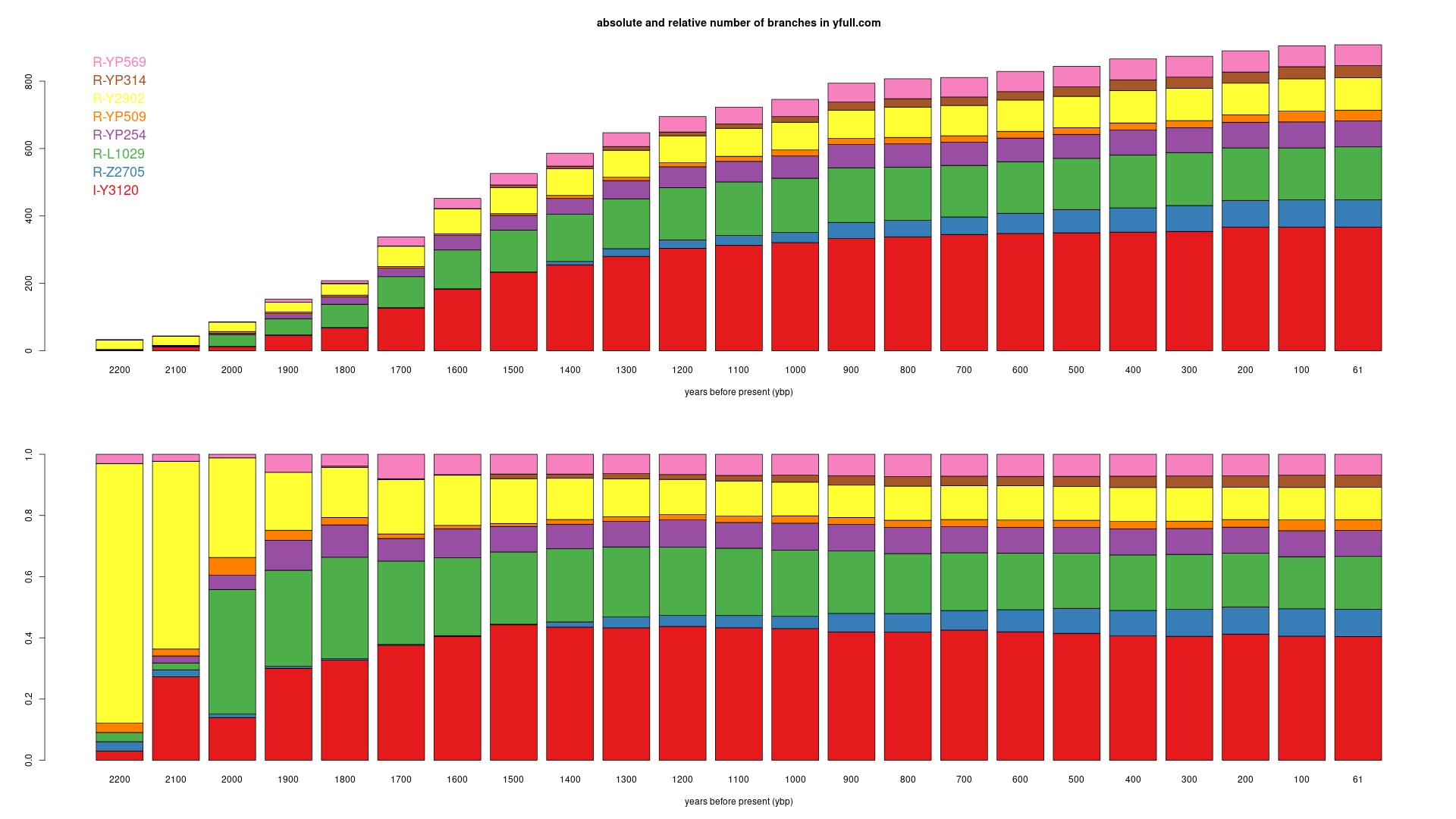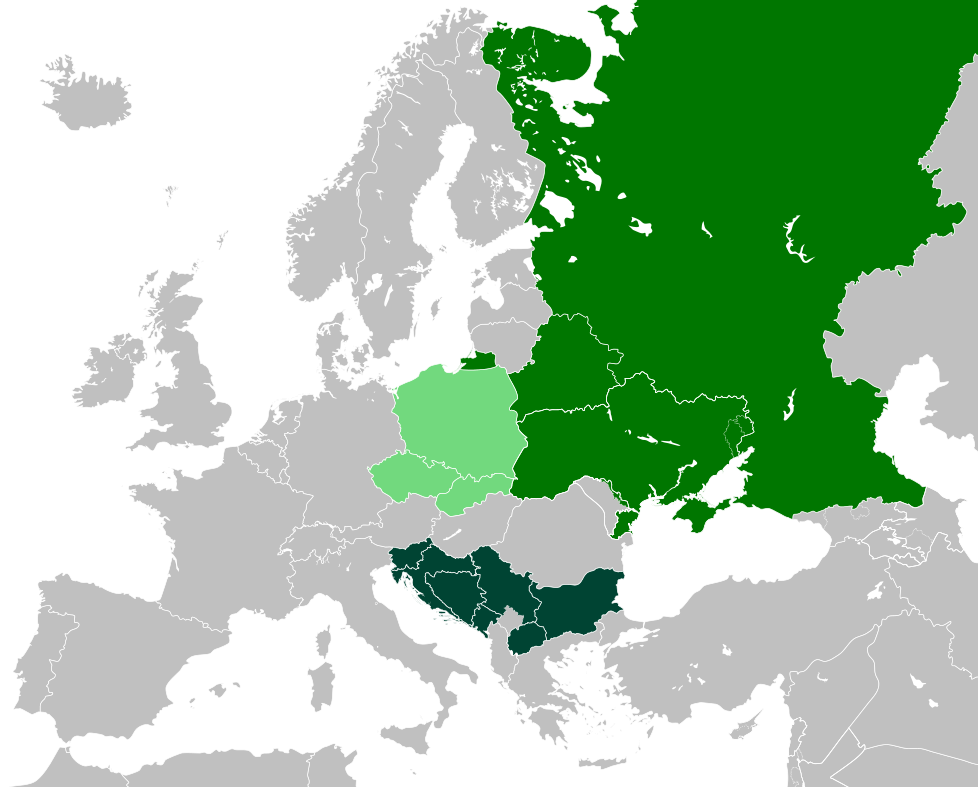




 |  |  |  |  |
 |  |  |  |  |  |  |
link to phylogenetic tree: R-YP569
link to phylogenetic tree: R-YP314
link to phylogenetic tree: R-Y2902
link to phylogenetic tree: R-YP509
link to phylogenetic tree: R-YP254
link to phylogenetic tree: R-L1029
link to phylogenetic tree: R-Z2705
link to phylogenetic tree: I-Y3120
yfull-links: R1a - R-M459 - R-M735 - R-M198 - R-M417 - R-Z645 - R-Z283 - R-Z282 - R-Z280 - R-Z92 - R-Y4459 - R-YP617 - R-YP577 - R-YP573 - R-YP569
yfull-links: R1a - R-M459 - R-M735 - R-M198 - R-M417 - R-Z645 - R-Z283 - R-Z282 - R-Z280 - R-CTS1211 - R-Y35 - R-CTS3402 - R-Y33 - R-CTS8816 - R-Y3301 - R-YP311 - R-S18681 - R-YP315 - R-YP314
yfull-links: R1a - R-M459 - R-M735 - R-M198 - R-M417 - R-Z645 - R-Z283 - R-Z282 - R-Z280 - R-CTS1211 - R-Y35 - R-CTS3402 - R-Y33 - R-CTS8816 - R-Y2902
yfull-links: R1a - R-M459 - R-M735 - R-M198 - R-M417 - R-Z645 - R-Z283 - R-Z282 - R-PF6155 - R-M458 - R-PF7521 - R-Y2604 - R-CTS11962 - R-YP515 - R-YP509
yfull-links: R1a - R-M459 - R-M735 - R-M198 - R-M417 - R-Z645 - R-Z283 - R-Z282 - R-PF6155 - R-M458 - R-PF7521 - R-Y2604 - R-L260 - R-YP256 - R-YP254
yfull-links: R1a - R-M459 - R-M735 - R-M198 - R-M417 - R-Z645 - R-Z283 - R-Z282 - R-PF6155 - R-M458 - R-PF7521 - R-Y2604 - R-CTS11962 - R-L1029
yfull-links: R-Z2103 - R-M12149 - R-Z2106 - R-Z2108 - R-Z2110 - R-CTS7556 - R-Y5592 - R-CTS1450 - R-Y18959 - R-Y10789 - R-Y23373 - R-Z2705
yfull-links: I2 - I-CTS2257 - I-L460 - I-P37 - I-M423 - I-FGC41353 - I-Y3104 - I-L621 - I-CTS10936 - I-S19848 - I-CTS4002 - I-CTS10228 - I-Y3120


A few patterns are found for the spread of languages. one is the power of a ruling class, which manages for a longer period the people in the area (like Romans and the Arab expansion). The second option is a migration and expansion of dominating tribe. We see this option in languages like Indo-European in Europe and Berber languages in the Maghreb.
For the Slavic languages, the first option is not present in the historic knowledge, while surrounding countries were writing history, so this is very unlikely. The second option could be possible.
If we look voor a paternal line that expanded in this period in the countries that have the three Slavic language branches (South-Slavic, West-Slavic and East-Slavic), one branch fits the period and region. This are the descending branches of I-Y3120. This line has a yfull tmrca of 2200 ybp. The paternal brothers are in Germany and France. The paternal brothers are 9 SNPs older, which is about 1200 year in yfull. The descending branches are in the regions indicated. Notice that the percentage can be about 50 percent in the South-Slavic region, and on the order of 20 percent in the West- and East-Slavic areas.
The distribution of branches at 2200ybp is created (using version 8.09 of the yfull archive). The area between longitude 6-36 Easter Length and latitude 40-55 is used, which is roughly the area where the Slavic languages are spoken. Is clearly more asymetric than 20 degrees west of that (between 14 WL and 6 EL); the second dataset is made with the same number of samples, and is also not symetric. The R-M222 is the known population growth in the Iron Age into Ireland/Scotland. It shows that several branches were not the result of continuous growth. The 8 largest branches in the area are drawn in the above diagram, each with the colours indicated. The branches on list of largest population growth had already 15 branches that were thought of as: probably Slavic population growth. Out of these 15, 13 are among the 8 largest branches. Two are in a second group (R-YP1337 and R-Y14300, nr. 13 and 15 in size). I-Y3120 and R-Z2705 are in the I2 and R1b-Z2103 branch and the others are in the R1a branches. On the Albania page, it is argued that the population growth of R-Z2705 is not a Slavic branch, but related to the Albanian language. The center location of this branch is in the specified rectangular region, but it is not in the region of the Slavic Language; the location of the center of this branch is in the region of the Albanian language.
In the easiest scenario I-Y3120 was the first expanding Slavic branch and the other paternal lines joined this line to survive and increase in population. The branches spread fast over large geographical areas. It looks like the spread over the West- and East-Slavic region was earlier, while the South-Slavic region might have become Slavic after the fall of the West Roman Empire.

In Early Slavs in wikipedia the relation to R-M558, R-M458 and I-CTS10228 is also suggested. A surprise is that only one of the reported articles mentions CTS10228, and mentions that it is unlikely that this marker is related. R-M558 and R-M458 are more than 4000 ybp and are not related to the spread of the Slavic languages.
The relation between I2 and Slavic language was suggested in 2019 on the . Other thoughts are reported here. A publication in a language journal made similar suggestions. A correlation as shown here, was not shown before.